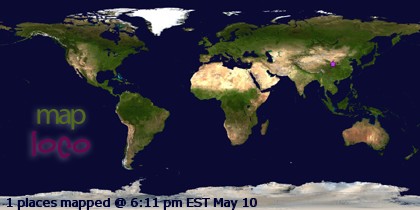"See? For me, that's Madrid. This bar is Madrid." Of course, I pressed him to explain himself-- and he did his best.
"I think Madrid is about life, ultimately. It's a city with everything-- beauty, history, museums. But people really savor life here. They know how to live, and they don't take things too seriously. Take that interchange I had just now with the waitress. I wanted to pay, she gave me a hard time-- that special light tone is very Madrid."
It was a theme I had noticed before, although Dani elucidated it better than I could have hoped. In my handful of visits to the city, I had picked up on that certain "vivaciousness"-- a feeling of energy and life, a New York-like joie de vivre but without some of the sweaty, crowded squirming discomfort. Even in the busiest times, it still felt like there was some personal space left on the Metro platforms. And yet that feeling...
Over three or four visits in the last months, Madrid has taught me about the many forms in which one can encounter this special zest-for-life. In the bustle of morning commutes, certainly. And the weekend buzz of bars in Malasaña or nearby trendy, gritty Lavapies--to be sure. But it's not just about movement.
I found that Madrid Something at the Casa Museo Sorolla, the museum dedicated to the lesser-known Spanish impressionist which I visited in early fall. Sorolla was a Spanish impressionist for his depictions of life in southern Spain and especially his generous splashes of the famous Valencian light. An ordinary museum experience can be sterile, but this one was full of warmth and life--the paintings crowded together, keeping each other company in tiled, richly-decorated rooms where Sorolla himself once painted. The images were full of that same dynamism, fully-realized characters who seemed dying to jump off the canvas. They may have been frozen, but they exuded a familiar energy.
View at the casa-museo

After that museum visit, another friend and I spent a lazy lunch in a beautiful plaza in a forgotten corner of the city. Warm-weather Madrid is chockablock with those kinds of nooks and crannies, full of sun-dappled cafes with people chatting, drinking coffee or beer, smoking. This Saturday-afternoon-cafe version of Madrid isn't in a hurry; it doesn't have anywhere special to be. Instead, it is simply thrilled to be out on this particular day, in this city of all the cities. And yet there is more potency to this lazy contentness than in the heights of some cities' most exciting evenings.
As good a place as any for an early-fall Saturday lunch

Further into the weekend, El Rastro beckons-- one of the best examples of Madrid's specal dynamism. One of the busiest flea markets in Europe, El Rastro floods the streets and alleys of the La Latina neighborhood weekly with leather workers; jewelers; junk food hawkers; vendors of rude t-shirts, key chains, bras, socks; curious shoppers; and (inevitably) pickpockets. It is nothing short of a seething, slow-moving mass of humanity, spreading slowly into the afternoon-- laughing, arguing, bargaining, chatting, drinking in the sunshine and the energy of the city.
El Rastro


1 comment:
thanks agen black walet bandung obat penghilang bekas jerawat di apotik
Post a Comment